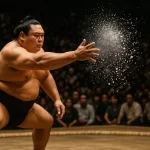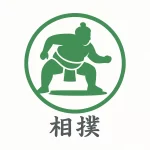Sumo

Sumo is a traditional Japanese full-contact wrestling sport where two competitors aim to force each other out of a ring or touch the ground. It holds deep cultural and spiritual significance.
Recent posts

Sumo Rituals Explained: Salt Throwing, Stomping, and Silence
Sacred gestures, silent standoffs, and clouds of salt—before the clash of titans in sumo, a ritual unfolds that is older than the sport itself. Rooted in Shinto spirituality and steeped in cultural symbolism, sumo rituals reveal a world where every stomp, stare, and bow carries the weight of centuries. This article explores how these actions purify, prepare, and transform the ring into sacred ground—and what they still mean in a digital age hungry for meaning.
Karate Essentials
Overview
Sumo is a traditional Japanese full-contact wrestling sport where two opponents attempt to force each other out of a ring or off balance. It is steeped in ritual and tradition.
History of Sumo
Sumo dates back over 1,500 years and was originally a Shinto ritual before evolving into a professional sport with codified rules and ranks.
Philosophy & Principles
Sumo teaches discipline, honor, and respect, both in training and lifestyle. Wrestlers live in strict dohyō communities where rank defines daily life.
Key Figures
Legendary rikishi such as Taiho, Chiyonofuji, and Hakuho brought sumo to international attention with record-breaking performances.
Global Presence
Sumo remains centered in Japan but is followed internationally, with tournaments streamed globally and foreign wrestlers joining top ranks.
Relation to Other Arts
Sumo shares body control and balance concepts with wrestling and judo but is unique in its structure and ceremonial culture.
Sumo Glossary
Learn terms like dohyō (ring), yokozuna (grand champion), mawashi (belt), and shikiri (pre-fight ritual).
Media & Culture
Sumo is broadcast on Japanese TV and featured in cultural exhibitions, with deep connections to Shinto traditions and national identity.
Travel Guide
Visit sumo stables in Tokyo or watch a live tournament in cities like Osaka or Nagoya. Sumo museums and training halls offer unique insights.





